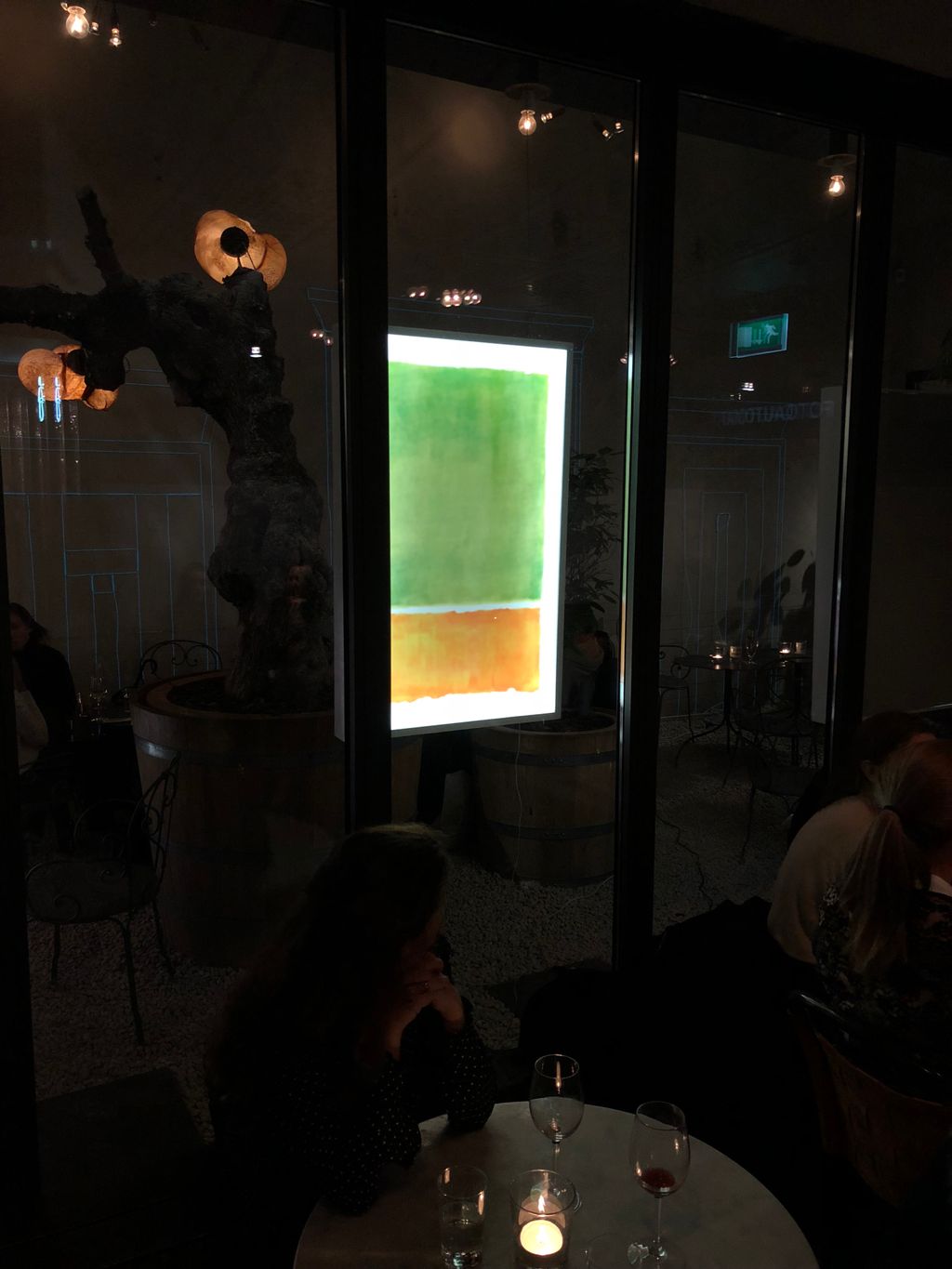In Växthusbaren at Taverna Brillo, Karl Patric Näsman is exhibiting six new works from his ongoing project "Entering the Void". Through a careful investigation of several hundreds of paintings of Mark Rothko that were once part in the so-called "Rothko Case" between 1971-1979.
The trial between Rothko's heirs and Marlborough Gallery was over Rothko's intended legacy to the outside world, addresses these selected paintings to a visual yet a legal void that the trial gave rise to.
In his long research work, K.P. Näsman used freely circulating images from the internet and books to address the issue of intellectual property rights and reproduction as a form of art production.
His new work consists of six isolated floating shapes based on selected Rothko paintings, whose provenance show how they were illegally traded by Marlborough Gallery after Rothko's suicide in 1970.
Printed on transparent paper and mounted with plexi glass in light boxes, Näsman's works can be seen as "evidence" in a legal court or as a paraphrase about the experience of the "luminous glow" regarding Rothko's paintings.
Standing in front of Näsman's artwork makes one to reflect on the value of art and the question of ownership based on different values. What happens when something is regarded as high art and sold at the big auction houses for astronomical figures, is transferred into something built in low material with an indication of an advertising sign?
Or, when free-circulating, low-quality images are converted into a high-quality file that is later presented as an "authentic artwork"?
These light boxes can be seen as a problematisation about the free movement of images as opposed to the "pure experience" of art. Most people nowadays experience art through digital displays, few are privileged to experience real art and, for that matter, own it.
With the exhibition Luminious Void, K.P. Näsman explores and discusses the unfamiliar realm of copyright and the art law, the private art market facing the public, the conflicts of value between reproduction/originality as well as the question about who owns the right to art.




